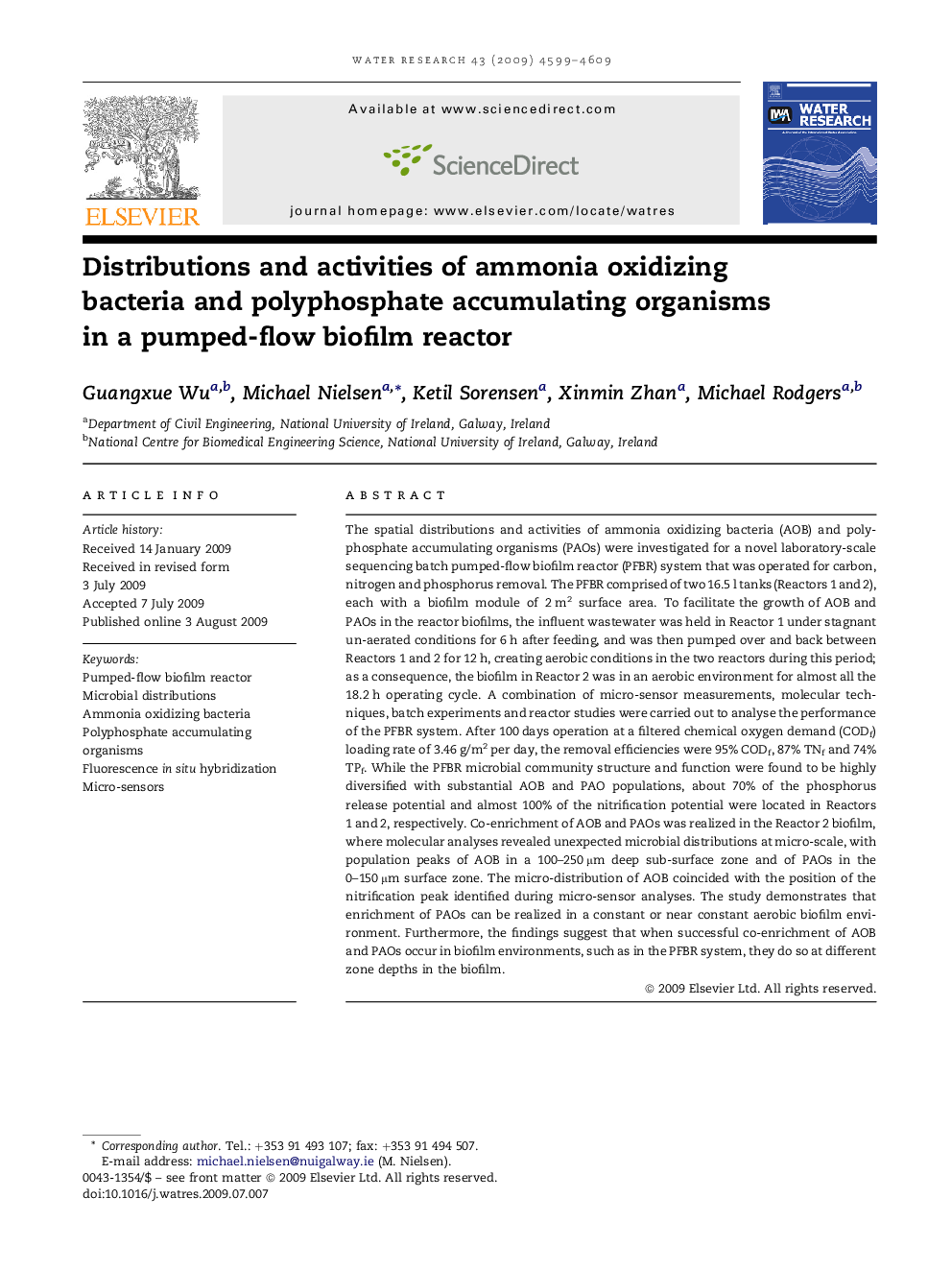| Article ID | Journal | Published Year | Pages | File Type |
|---|---|---|---|---|
| 4485510 | Water Research | 2009 | 11 Pages |
The spatial distributions and activities of ammonia oxidizing bacteria (AOB) and polyphosphate accumulating organisms (PAOs) were investigated for a novel laboratory-scale sequencing batch pumped-flow biofilm reactor (PFBR) system that was operated for carbon, nitrogen and phosphorus removal. The PFBR comprised of two 16.5 l tanks (Reactors 1 and 2), each with a biofilm module of 2 m2 surface area. To facilitate the growth of AOB and PAOs in the reactor biofilms, the influent wastewater was held in Reactor 1 under stagnant un-aerated conditions for 6 h after feeding, and was then pumped over and back between Reactors 1 and 2 for 12 h, creating aerobic conditions in the two reactors during this period; as a consequence, the biofilm in Reactor 2 was in an aerobic environment for almost all the 18.2 h operating cycle. A combination of micro-sensor measurements, molecular techniques, batch experiments and reactor studies were carried out to analyse the performance of the PFBR system. After 100 days operation at a filtered chemical oxygen demand (CODf) loading rate of 3.46 g/m2 per day, the removal efficiencies were 95% CODf, 87% TNf and 74% TPf. While the PFBR microbial community structure and function were found to be highly diversified with substantial AOB and PAO populations, about 70% of the phosphorus release potential and almost 100% of the nitrification potential were located in Reactors 1 and 2, respectively. Co-enrichment of AOB and PAOs was realized in the Reactor 2 biofilm, where molecular analyses revealed unexpected microbial distributions at micro-scale, with population peaks of AOB in a 100–250 μm deep sub-surface zone and of PAOs in the 0–150 μm surface zone. The micro-distribution of AOB coincided with the position of the nitrification peak identified during micro-sensor analyses. The study demonstrates that enrichment of PAOs can be realized in a constant or near constant aerobic biofilm environment. Furthermore, the findings suggest that when successful co-enrichment of AOB and PAOs occur in biofilm environments, such as in the PFBR system, they do so at different zone depths in the biofilm.
